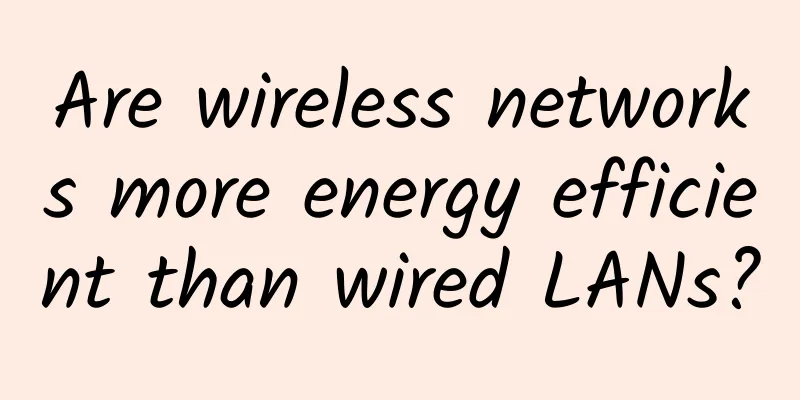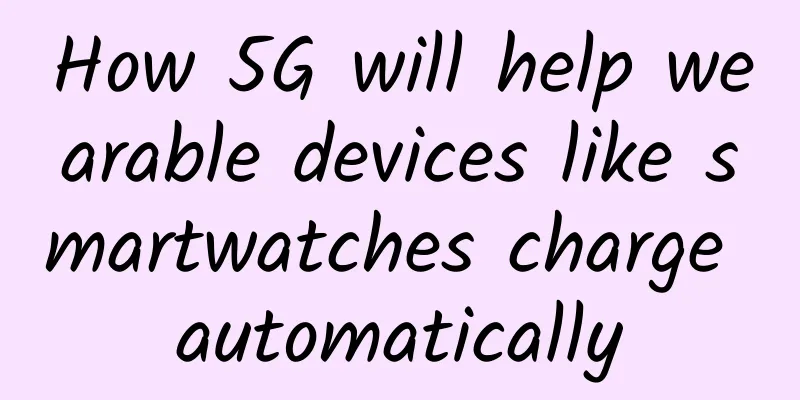Are wireless networks more energy efficient than wired LANs?

|
Sustainability and reducing energy consumption are hot topics today—both in the home and in commercial network environments. Larger businesses often have energy management teams or outsource this function to try to reduce power consumption by eliminating wasteful light and HVAC usage. But what about the network infrastructure itself? More specifically, how does wired Ethernet compare to Wi-Fi when it comes to potential energy savings? What about resiliency when organizations consider Ethernet vs. Wi-Fi energy savings? As with everything in networking, the answer is complex. Before Wi-Fi became the primary network access method in most environments, PCs were connected to network switch ports via patch cords. Ethernet switches only had enough onboard operating power to keep Ethernet functional. At the time, Power over Ethernet (PoE) was not available, and there were fewer devices on the entire network. As networks and devices modernize, Ethernet switches also need to provide operating power via PoE for VoIP phones, IP cameras, and Wi-Fi access points (APs), and the total number of wired and wireless client devices grows exponentially. Can Wi-Fi reduce energy consumption?It is impossible to answer this question without situational context. Let's consider two scenarios: Switch to an all-wireless office. For the sake of argument, let's say there's an environment with 200 Ethernet-connected PCs and printers. That requires seven Ethernet switches. All desktop PCs are converted to Wi-Fi laptops, connected to six Wi-Fi 5 APs, and five switches are eliminated. That should be a clear energy win, right? Maybe. The remaining two switches need to be upgraded to models that support PoE, providing a more powerful source of power to the wireless APs. So you'll have to do some math between the old and new switches to know if you've saved energy. The same concept applies to the PCs themselves. Does the new laptop use more power than the old one? You'd hope so, but it depends. There are fewer wired computers, but almost the same number of switch ports. As the organization modernizes, it will retire 300 desktop computers and replace them with 100 Wi-Fi laptops for employees who continue to go to the office. The company also significantly reduced its staff, with the remaining employees working remotely. A large number of network devices were also added, including wired VoIP phones, CCTV cameras, network storage, card access, and Wi-Fi 6E APs, which require higher PoE voltages than traditional APs. The network closet has fewer switches cluttering it, but overall, the network closet consumes more energy after the modernization. Wi-Fi doesn’t operate in a vacuum. Sometimes it consumes less energy than the LAN connection paradigm it replaced. However, in other cases, other changes happening simultaneously in the environment can offset any energy savings. One area related to power where Wi-Fi arguably has an advantage is designing for power resiliency. When access points get their power from the network switch, planning for reliability becomes easy. Key elements include keeping the PoE budget for the switch, using dual power supplies on the switch, with one side connected to a decent uninterruptible power supply (UPS) and the other connected to street power. By reducing the number of switches needed (because more end devices are on Wi-Fi), budget can be used for better switching power supplies and UPS equipment. Better wireless networks mean better efficiencyWith each new wireless standard, the 802.11 working group has introduced new power-saving features that work at the wireless protocol layer to extend the life of client device batteries. Various techniques enable each client's wireless adapter to acquire micronap frequently enough to extend battery life and reduce charging requirements. This is an area that has received more attention from developers than the wired Ethernet area. Overall, the latest Wi-Fi power-saving features should reduce the power consumption of each device over its lifetime, but then again, this may become insignificant due to a huge increase in the number of connected devices. There is no such thing as a simple and straightforward energy efficiency paradigm for either wired or wireless networks. |
<<: It is urgent for operators to improve network operation and maintenance
>>: git clone network speed is too slow, what to do, teach you how to solve
Recommend
How to optimize network operations in times of change
As the impact of the coronavirus pandemic has cha...
5G and the Internet of Things: A New Era of Digitalization
There is no doubt that 5G mobile networks will be...
Deepin Technologies was invited to attend the symposium held by Guangxi Zhuang Autonomous Region Information Center
On December 4, Wang Zhen, Vice President of R&...
BandwagonHost: $37.3/year KVM-1GB/20GB/1TB/Fremont Data Center
In January this year, BandwagonHost released a pa...
Distributed Fiber Optic Sensors Global Market Report 2023
The global distributed fiber optic sensor market ...
RAKsmart: 30% off on all VPS, VPS hosting in Hong Kong/Japan/Los Angeles/San Jose starting from $1.99/month
RAKsmart's December year-end promotion has be...
How powerful is 5G?
The reporter learned from the interview that my c...
New opportunities brought by 5G millimeter wave fixed wireless
The broadband industry’s new mission is to extend...
8 myths about 5G
5G is the next generation of wireless broadband t...
What will the communications network look like in 2030?
[[426987]] This article is reprinted from the WeC...
GigsGigsCloud:$16/month KVM-1GB/30GB/1TB/1.6T High Defense/Los Angeles CN2 GIA+AS9929
GigsGigsCloud is a long-established foreign hosti...
The operating data of the three major operators in January was released: China Telecom’s 5G users are about to exceed 100 million
[[383106]] In a blink of an eye, the Spring Festi...
Solve the problem of pipeline complexity in data centers: Seventeen principles of pipeline avoidance!
1. Small pipes give way to large pipes: Small pip...
As the natural environment becomes increasingly harsh, underground data centers are becoming a trend
Scientific research over the past few decades has...









